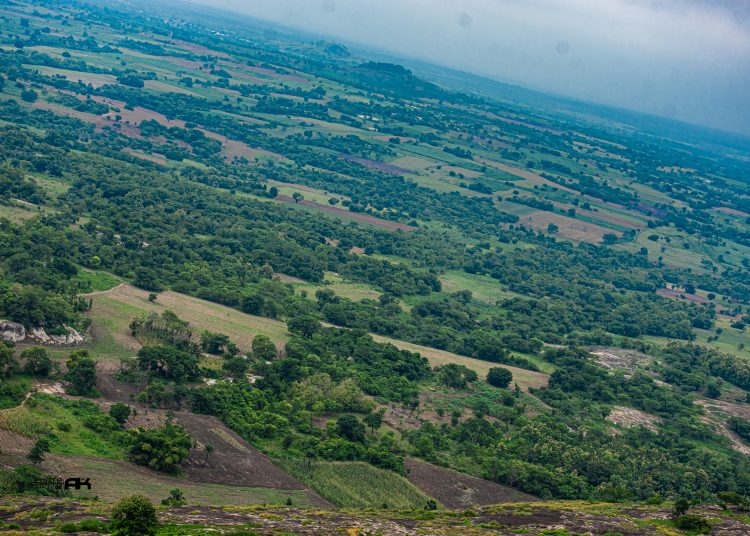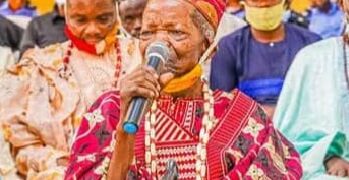Ado Awaye mountain is one of the unique tourism potentials in Oyo state, it is known to be a home of the only suspended lake in Africa (Iyake Lake) but beyond the lake, Ado awaye mountain also have other Natural tourist attractions and below as some of it with pictorial evidence
1 Iyake Lake
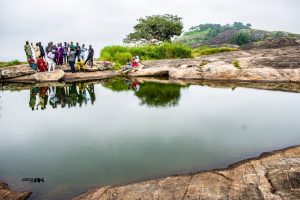
Iyake Lake is the only recognized suspended/hanging lake in Africa It is said to be bottomless and have swallowed those who have tried to measure its depth. It was formed by a barren woman Iya who alwaya cried because she has no child she left her matrimonial out because of victimization and few moments after she settled in Ado Awaye she moved to the Awaye mountain with a pot of water and buried herself alive , some children also joined her because she was a great benefactor, those who could not joined her ran back home to inform their parents and they moved to confirm the story Ibi ti Iya Ti nke wole si, and later turned to Iyake lake.
2. Agbómofúnyàké
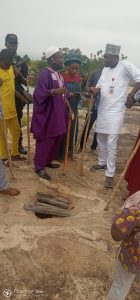
Agbómofúnyàké literally means “collects child and gives to iyake”. This little hole is located just beside the iyake lake. It is believed that, whenever the hole has water in it, whoever puts his leg into it gets dragged to the bottom of iyake lake.
3. Ìyá-Aláró Lake
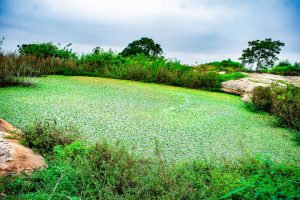
It is also one of the numerous lakes on the mountain. The lake was named after an old woman in the Ado-Awaye village, who specializes in dying of clothes.
It is said that the old woman, known as “Iya Alaro”, worships the lakes and sacrifices to it at specific times during the year.
The lake is characterized by a gloomy depth which underscores its association with Iya Alaro and its surface and surrounding is bedecked with a lush overgrowth of colourful vegetation.
4. Oke Ishage (Ishage Rock)
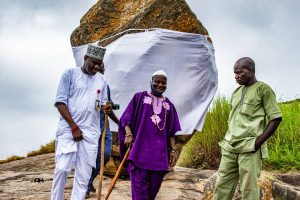
Ishage Rock is the bringer of rain for the Ado-Awaye people. It is a large elongated boulder of rock, balanced and standing upright on one of its small edges.
The fact that this boulder has not fallen off the steep mountain side on which it rests remains a mystery to the Ado-Awaye people and tourists visiting the mountain.
Whenever it doesn’t rain and rain is needed, the chief priest goes to the rock, covers the “waist” of the rock with a white cloth, then rain falls for 3-4 days straight.
5. Esè àwon Àgbà

Esè àwon Àgbà translates to “the footprint of the elders”. It is a cluster of large “footprints” found all over the mountain. It is believed that the gods once walked over the mountain to protect the locals during the time the locals stayed up the mountain.
6. The Elephant Tree
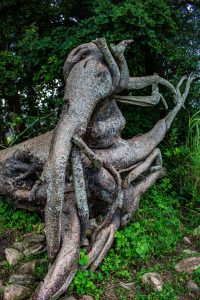
This is composed of the tangled trunk or root of a fallen tree which dramatically takes the form of the head and trunk of an elephant.
The eyes of the elephant are also well represented on the formation. Hikers on the mountain are often tempted to climb the formation and sit on the ‘elephant’s head’ while posing for photos.
7. Esè kan Aiyé Esè kan Òrun

This is a wide and deep chasm on the mountain which separates one part of the mountain from the other part which hosts the peak of the mountain.
Only brave mountain climbers dare cross this valley as the rock slopes steeply along the valley walls. Only a narrow, very steep and slippery path across the valley, links the two parts of the mountain



